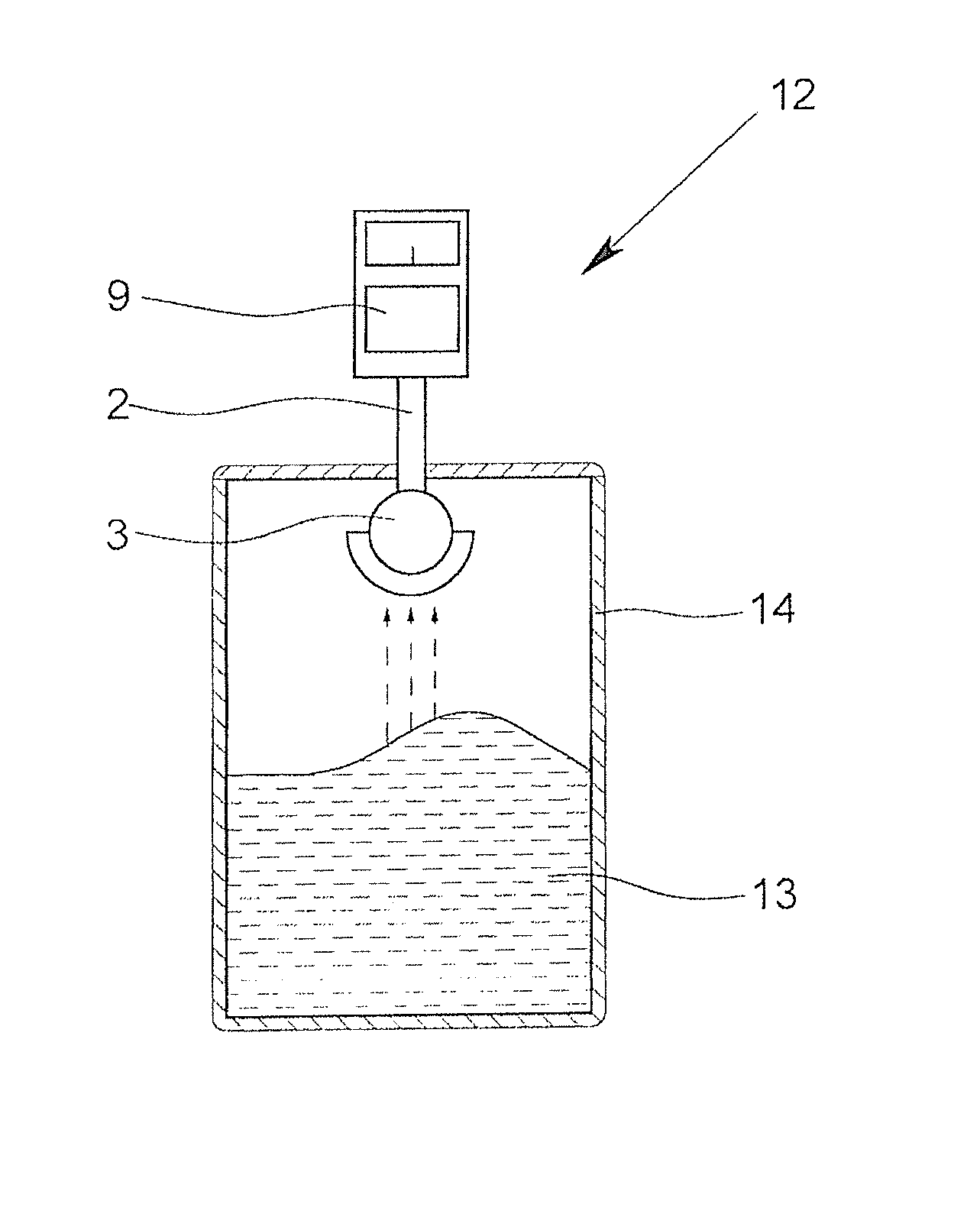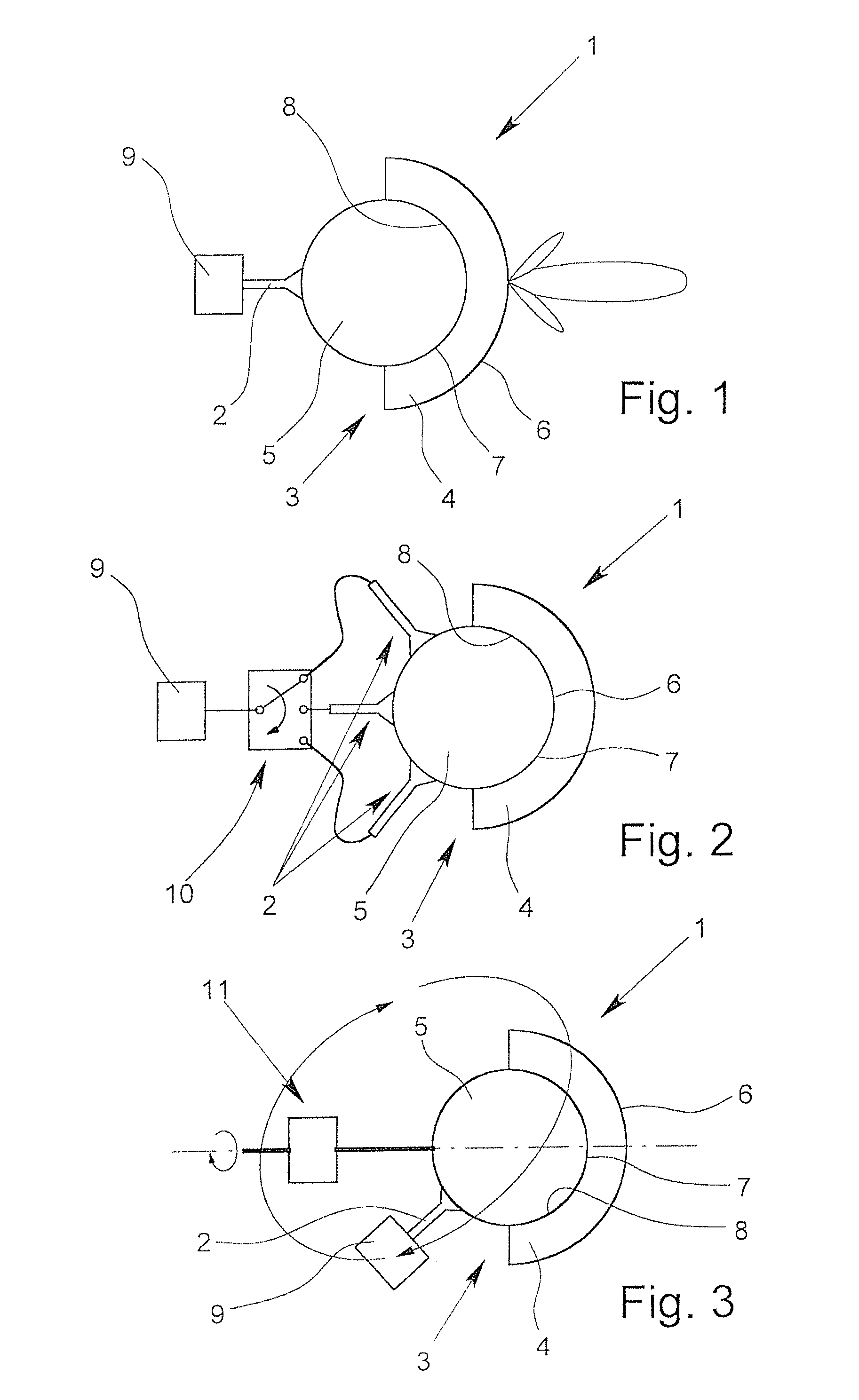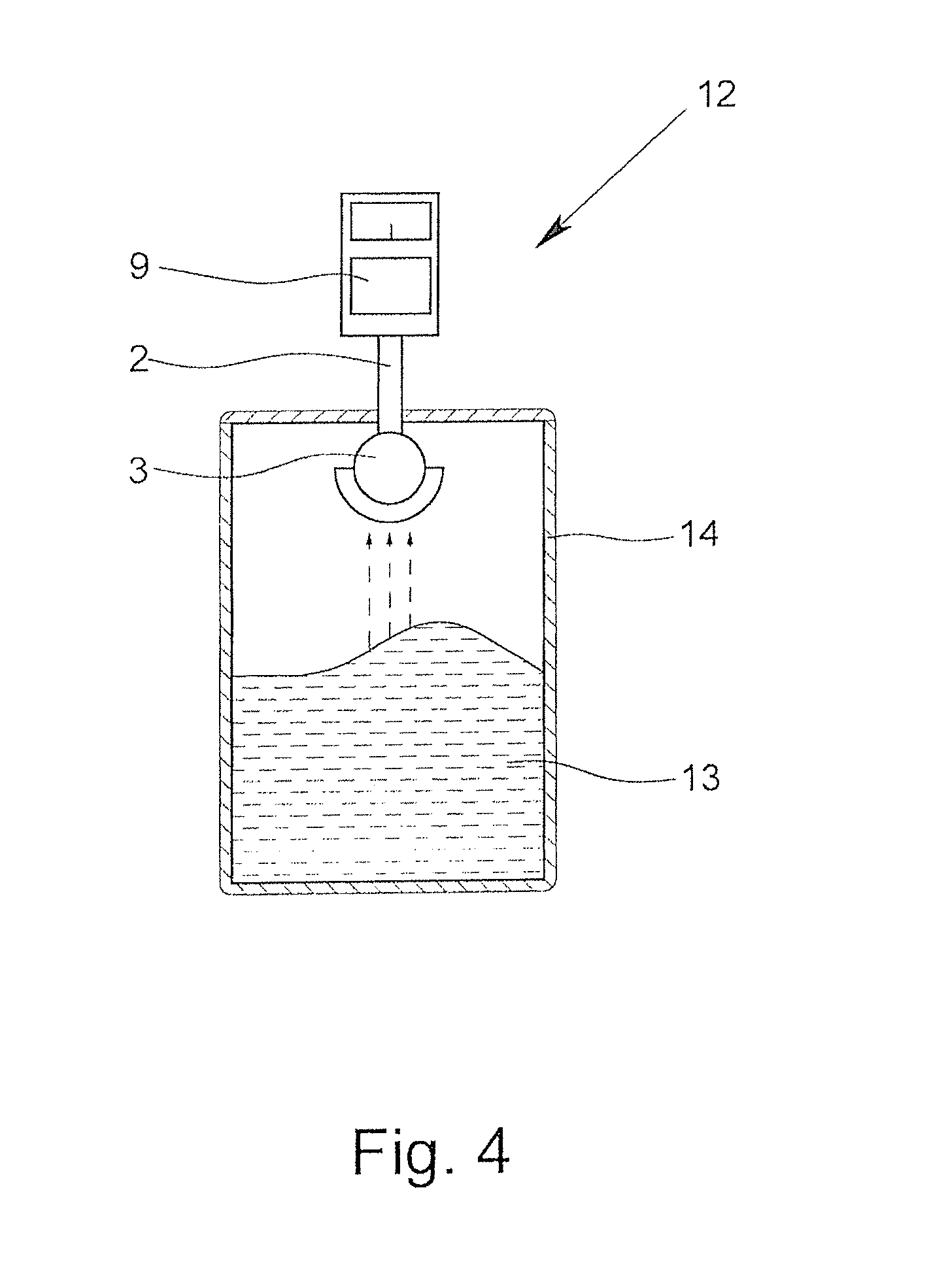Dielectric antenna and fill level sensor using the radar principle
a technology of fill level sensor and dielectric antenna, which is applied in the direction of waveguide horn, machine/engine, instruments, etc., can solve the problems of disturbance in measuring fill level, difficult to determine fill level, and high construction complexity
- Summary
- Abstract
- Description
- Claims
- Application Information
AI Technical Summary
Benefits of technology
Problems solved by technology
Method used
Image
Examples
Embodiment Construction
[0041]FIG. 1 shows a cross-sectional view through a schematically represented antenna 1 according to the invention having an indicated adjusting-directivity. A variation of the antenna 1 according to the invention is shown schematically in each of FIGS. 2 & 3. FIG. 4 schematically shows a construction (not to scale) for measuring the surface of a medium with a fill level sensor according to the invention.
[0042]The antenna 1 has supply element 2 that emits electromagnetic radiation—for example, in the form of spherical waves—to a dielectric lens 3. The lens 3 has an outer component 4 and an inner component 5. The outer component 4 has, in this example, the shape of a portion of a hollow sphere, here, a hemisphere. What is shown is how radiation in the form of a main beam, and here, two auxiliary beams, is formed at the position of the radiating surface 6 of the outer component 4, which is located opposite from the supply element 2.
[0043]In the illustrated example, the inner component...
PUM
 Login to View More
Login to View More Abstract
Description
Claims
Application Information
 Login to View More
Login to View More - R&D
- Intellectual Property
- Life Sciences
- Materials
- Tech Scout
- Unparalleled Data Quality
- Higher Quality Content
- 60% Fewer Hallucinations
Browse by: Latest US Patents, China's latest patents, Technical Efficacy Thesaurus, Application Domain, Technology Topic, Popular Technical Reports.
© 2025 PatSnap. All rights reserved.Legal|Privacy policy|Modern Slavery Act Transparency Statement|Sitemap|About US| Contact US: help@patsnap.com



